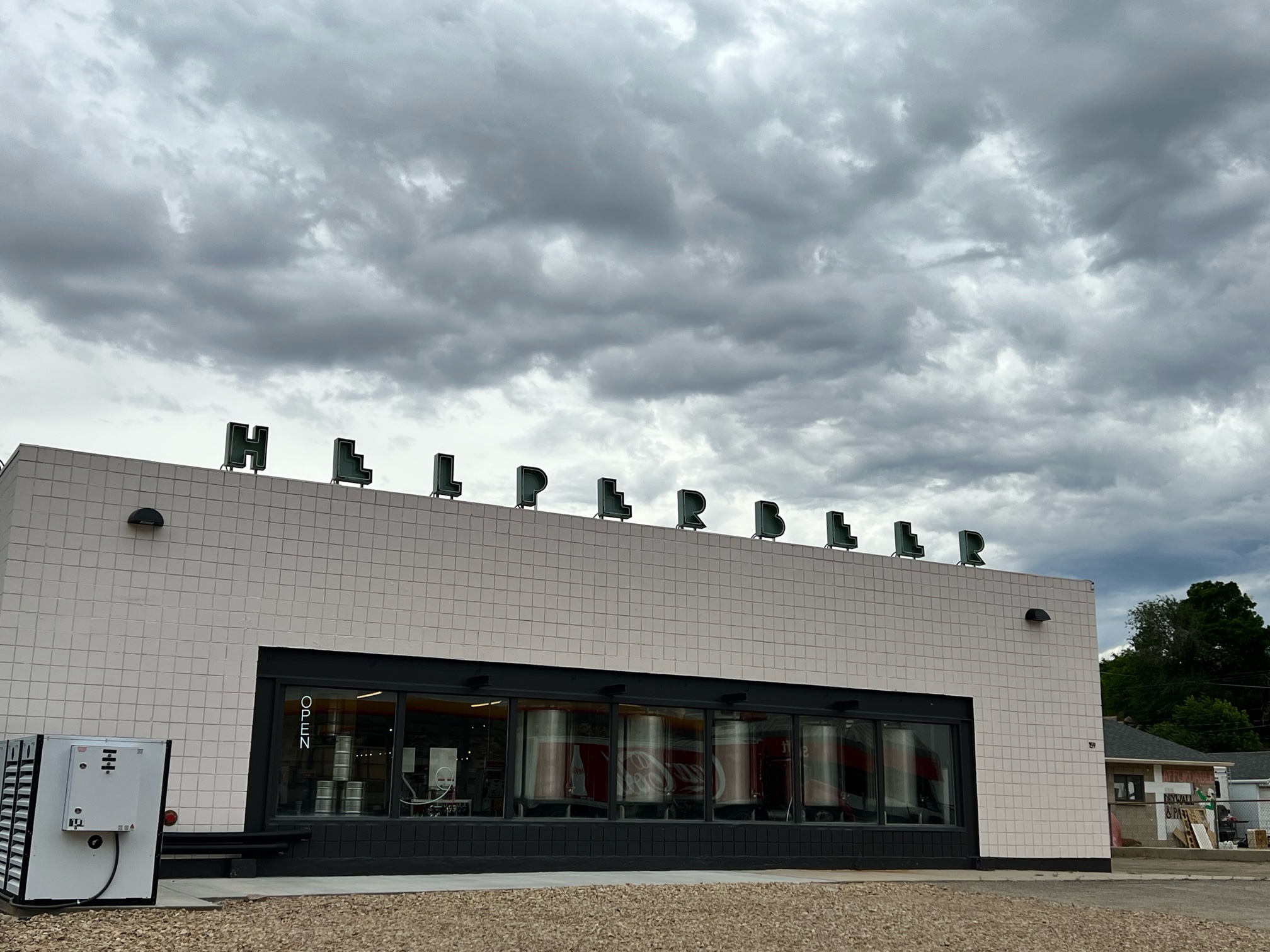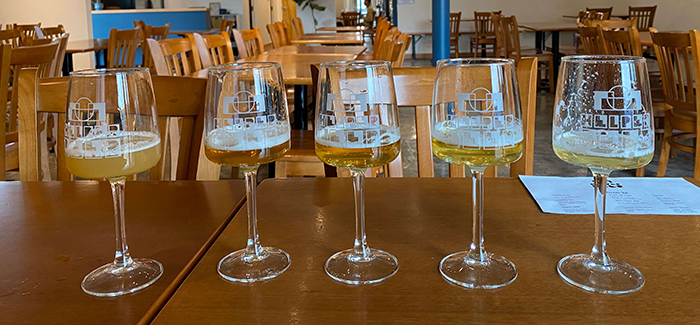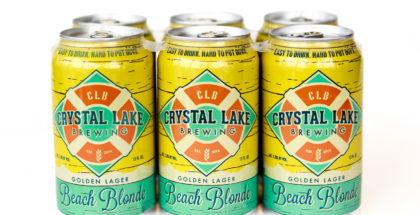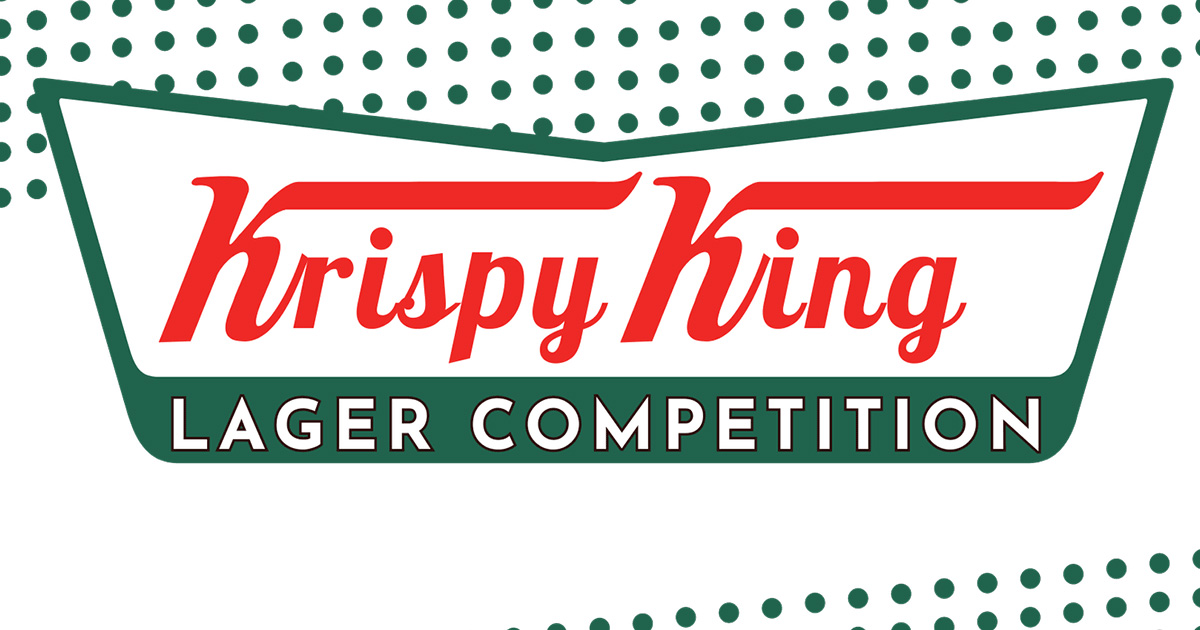Brewery Showcase | Helper Beer (Helper, Utah)
At Helper Beer’s grand opening in May 2023, brewer Jaron Anderson had 11 beers on the board, all brewed in-house. Anderson, a protégé of Templin Family Brewing’s Kevin Templin, is a beer nerd. His eyes kind of roll back in his head if you ask him a question about beer, and he stops whatever he’s doing—even if he’s busy in the taproom—and enters a kind of reverie. Templin taught him well.

Helper Beer
Helper Beer is both the brewery’s name and the name of its flagship beverage, a light American lager. Both are named for the town, quirky little Helper, Utah, where “helper” engines are still added to the coal trains to push them up the steep grade toward Salt Lake City. Helper, no longer a coal mining town, has gone through a renaissance of sorts, as fine artists filled empty buildings with painting workshops, ceramics studios and gallery spaces. Now Helper Beer is part of it.
Anderson wanted his eponymous product to be a light lager because it’s a difficult beer to make.
“It’s made from simple ingredients, and you can’t hide the technical flaws,” he said.
Anderson sourced the lightest kilned grains he could find and used rice and corn adjuncts for sugar access without extra flavor or color. He was also careful to use all-American hops. The result is a cold-aged beer with a gentle sweetness and a mild melon aroma: bright, clear and crispy.
“I feel like the industry’s catching up with lagers,” Anderson says.
I’m sitting at the bar, facing an ambitious number of taps. Thirteen of them are full, and an additional three beers are only available canned due to Utah liquor laws. Once a beer is on the board, it seems to be there to stay.
“It’s gone through a renaissance, I think, because during COVID places that didn’t previously have time to make a lager had an opportunity,” he says.
Anderson isn’t a native of Helper, but he, his wife, Amy, and their two children are living as locals. They’ve become a central part of the community, with the brewery pouring (if you’ll pardon the pun) into the town. Helper Beer’s German-style Pilsner, Schloss Tor, means “Castle Gate,” in German. It’s the name of both a local rock formation and one of the coal-camps-turned-ghost-towns nearby. A Czech Pilsner and an Italian Pilsner also honor the immigrant groups who first settled the area.
Italian Pilsner
When I tasted the Italian Pils, which was new on the board during my visit, I understood why Anderson is proud of it. Like all of Helper’s beers, it has a long-lasting head which laces the glass to the last drop. This beer is light-bodied with medium to high carbonation and medium bitterness. I had it with their prosciutto sandwich on a house-made roll (made from imported Italian flour). What could be better?
An Italian Pilsner was first made when a northern Italian somewhere near Lake Como set out to make a German Pilsner. He called it “tipo pils,” meaning a type of pilsner because it was based on the flavor profile of a Pilsner, but of course it wasn’t made in Pilsen, Germany. He put this through an English cask dry-hopping process, which gave Old World hop flavor to a new beer.
Anderson dry-hopped his Italian Pilsner with Contessa, an American hop with a noble aroma and “a teeny bit” of the subtle American hop Pekko, to give a hint of stone fruit or pear. He adds that the main star of the show is Styrian Golding, “a Slovenian hop that’s very old school—very floral and peppery.”

Much More
The beer list also contains a few sours, a style of beer I was grateful Helper Beer provided such a wide sampling of. I was offered the Fruit No Fruit, made with a yeast genetically resequenced to produce thiols—the flavor compounds that emit a tropical fruit aroma. The beer tastes like a fruit bowl of guava, passionfruit, pineapple and maybe a little banana, but there’s no fruit in it. It’s also been kettle-soured; the brewer pitches bacillus into the wort, then boils it to kill the culture but keep the tartness.
The draft list also includes—but isn’t limited to—a Munich-style Dunkel Lager, a Bavarian Wheat, a West Coast IPA, a Hazy, a straight up Tart, a Lime Gose and a popular Nitro Stout.
Helper Beer attended the Great American Beer Festival in 2023, where the Andersons hung out with mentor Templin and some of his old crew. Or, as Templin insists, “the family.” Templin says he trains his employees to have a vested interest in the beer industry and is proud that Anderson started by putting labels on bottles by hand, taking out the garbage and filling kegs.
“He’s a grinder,” Templin says. “He’ll get up early and get it done.” Templin can’t help but win beer competitions, and the desire to win has rubbed off on Anderson.
“I love winning medals,” Anderson says, and we should expect to see some in the future.








Submit a Comment